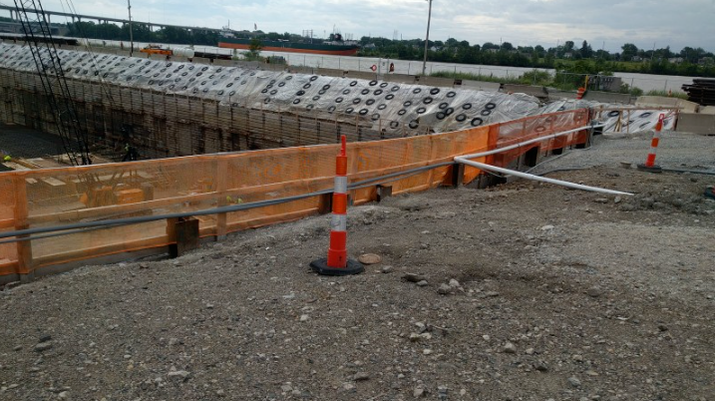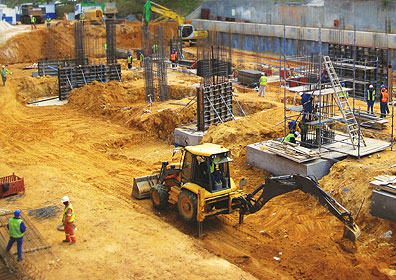Exactly How Consulting Engineers Enhance Geotechnical Engineering Projects: Insights Into Their Know-how, Methods, and Collaborative Approaches
Consulting designers are crucial in boosting geotechnical design tasks, using their specialized expertise to browse the intricacies of subsurface conditions. Their methods include a series of website examination methods, including Standard Infiltration Examinations (SPT) and Cone Infiltration Tests (CPT), which notify crucial choices during the style and construction phases. Their joint methods foster interaction amongst varied task stakeholders, inevitably shaping the task's trajectory. As we examine the multifaceted functions these professionals play, it comes to be clear that their contributions prolong beyond technological competence, prompting a more detailed take a look at the effects for task success.
Duty of Consulting Engineers
The expertise of consulting engineers in geotechnical design is essential to the effective execution of construction projects. These experts play a pivotal duty in examining dirt and rock residential or commercial properties, which are crucial factors affecting style and building decisions. By carrying out thorough site examinations, getting in touch with engineers collect vital data that notifies the design procedure, making certain jobs are built on steady and ideal ground.
Consulting designers likewise give very useful insights into danger monitoring (geotechnical geologist). They determine possible geotechnical dangers, such as landslides, dirt liquefaction, and settlement issues, enabling stakeholders to carry out effective reduction methods. Their knowledge aids in enhancing foundation styles, which can lead to significant expense savings and improved safety and security
In addition, speaking with engineers function as an essential link between job proprietors, architects, and professionals. Their ability to translate complicated geotechnical data right into actionable referrals cultivates collaboration and promotes notified decision-making throughout the task lifecycle. This multidisciplinary method not only enhances task performance however also makes sure conformity with regulative requirements and best practices.
Key Techniques in Geotechnical Design

One primary methodology is website examination, which includes carrying out field tests and lab evaluations to gather data on subsurface conditions. Methods such as Criterion Penetration Screening (SPT) and Cone Penetration Testing (CPT) are extensively made use of to assess dirt stratigraphy and stamina. In addition, geophysical methods, consisting of seismic and electric resistivity surveys, give non-invasive ways to analyze subsurface attributes.
One more crucial method is numerical modeling, which makes it possible for designers to mimic numerous circumstances and predict exactly how soil-structure interactions will act under various loading conditions. Finite Aspect Analysis (FEA) is an usual method utilized in this context.
Moreover, the design of foundations, preserving frameworks, and earthworks depends heavily on these techniques - geotechnical geologist. By incorporating sophisticated logical devices with field data, seeking advice from engineers can establish customized remedies that resolve particular job challenges, eventually adding to Clicking Here the stability and security of construction tasks
Importance of Soil Evaluation
Soil analysis offers as a foundational element in geotechnical engineering, offering essential insights right into the physical and chemical buildings of dirt necessary for efficient construction planning. Comprehending dirt features is essential for determining its load-bearing capability, drain habits, and possibility for negotiation or instability. Detailed soil examinations, including sampling and research laboratory testing, help recognize criteria such as dirt kind, dampness web content, thickness, and shear strength.
These analyses notify the selection of proper building methods and materials, ultimately affecting task security and longevity. Natural soils may call for various structure layouts contrasted to granular dirts, necessitating tailored engineering solutions. Dirt analysis aids in determining pollutants that can posture dangers to human health or the atmosphere, allowing for the development of mitigation strategies.
Including dirt evaluation into the beginning of task growth assists to minimize unpredicted obstacles, making certain that engineers can prepare for and attend to prospective concerns before they escalate. By developing a thorough understanding of the website conditions, seeking advice from engineers can maximize style effectiveness and reduce prices, consequently enhancing the total success of geotechnical engineering projects.
Joint Methods in Projects
Effective geotechnical projects often rest on collective methods that unite diverse proficiency from numerous self-controls. Reliable partnership amongst seeking advice from engineers, rock hounds, ecological scientists, and building and construction experts is crucial for attending to complex obstacles and optimizing job end results. By leveraging the distinct abilities and knowledge of each group participant, jobs can gain from a holistic understanding of the site problems, regulatory demands, and design constraints.
Routine interaction and interdisciplinary meetings help with the sharing of understandings and foster a culture of team effort. These joint efforts allow the recognition of potential risks early in the job lifecycle, permitting timely mitigation methods. Including responses from stakeholders, consisting of local communities and regulatory companies, makes sure that all More hints point of views are taken into consideration, boosting task approval and conformity.
In addition, the assimilation of innovative modern technologies, such as Geographic Information Systems (GIS) and Building Details Modeling (BIM), more boosts cooperation. These devices permit for the real-time sharing of information and visualization of geotechnical problems, advertising notified decision-making. Inevitably, a joint approach not only streamlines project execution yet additionally lays the structure for cutting-edge options to complicated geotechnical engineering challenges.
Effect On Project End Results

Consulting designers use sophisticated methodologies such as danger analysis and predictive modeling, which improve the precision of project projections. Their capacity to integrate ingenious modern technologies, like geotechnical instrumentation and data analytics, additionally refines the style and building and construction processes. Because of this, tasks experience improved effectiveness, lowered costs, and reduced hold-ups.
In addition, fostering efficient interaction and cooperation among employee boosts analytic capabilities. When difficulties occur, a joined front permits swift identification of services, stopping possible setbacks. Ultimately, the collective initiatives of getting in touch with engineers add to higher quality results, making sure that jobs satisfy both governing criteria and customer assumptions.
Verdict
